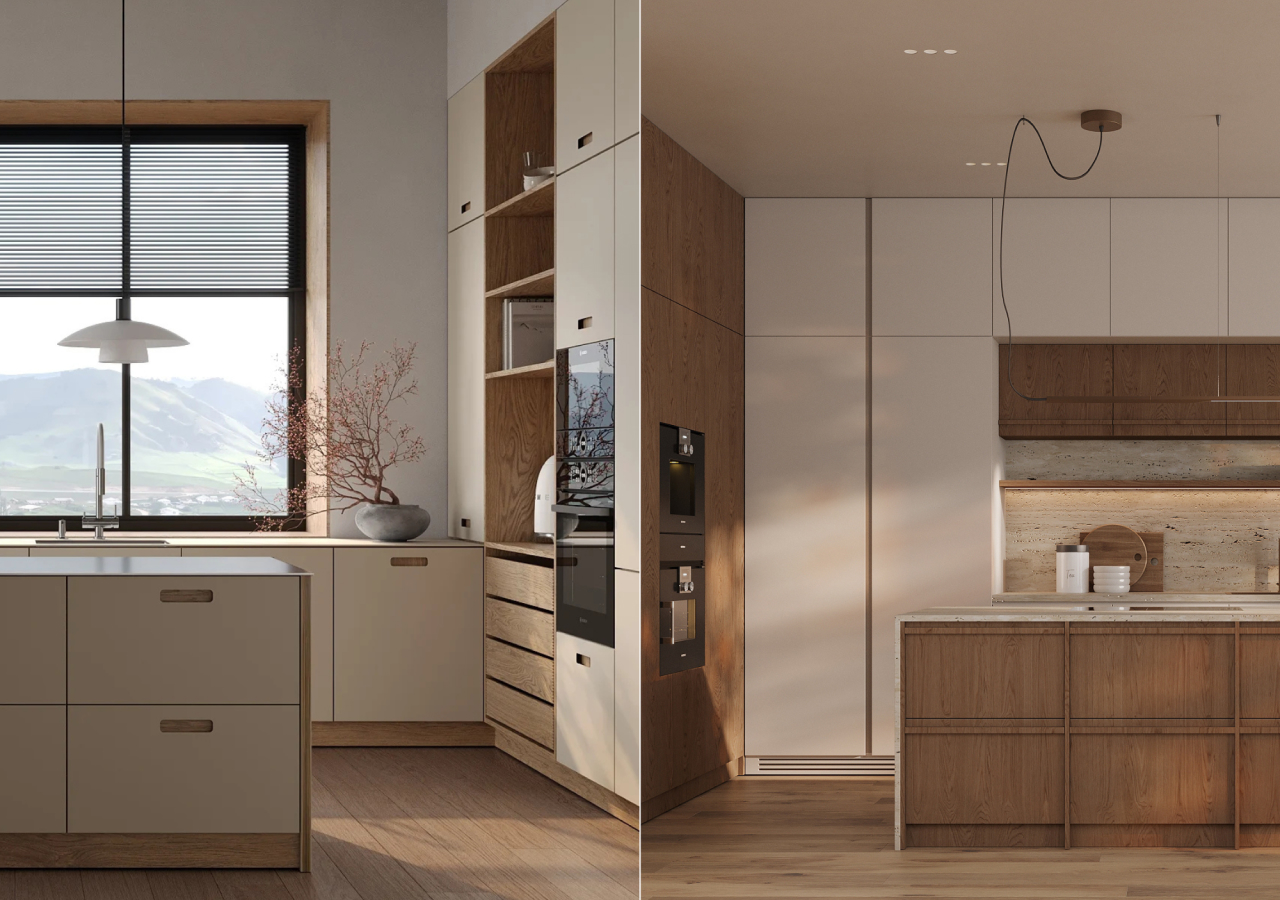Among contemporary homeowners seeking a serene, sophisticated, and adaptable kitchen style, two design schools stand out: Japanese and Scandinavian kitchens. Both have gained devoted followings for their minimalist aesthetic, attention to detail, and focus on natural materials. However, the kitchen aims to be highly functional in addition to its aesthetic appeal. Appliance garage built-ins, coffee stations, and trash bin pull-outs are features regularly found to facilitate day-to-day routines more effectively and keep the space organized.
Here, we’ll explore the design heritage, shared values, and similarities and differences between Japanese and Scandinavian kitchens and offer advice on how to select the perfect choice for your lifestyle.
The Origins of Japanese Kitchen Design
.webp)
Japanese kitchen design is the manifestation of a long-standing philosophy of deliberate living. Historically sleek and modular, these kitchens are designed for compact spaces without compromise on elegance. Aesthetic wisdom lies in the form of wabi-sabi—a cosmology discovering grace in simplicity, imperfection, and the world outdoors. Cabinetry is almost always handleless or accommodated by minimalist cutouts, and appliances are tastefully hidden or even fully hidden in a bid to maintain visual serenity.
Natural elements such as dark-stained wood, stone, and bamboo hold center stage in the palette, which has a bias towards earth colors: charcoal, clay, beige, and black. The design favors efficiency above all else, with pull-out pantries, inbuilt organizers, and compact cooking areas. It’s a kitchen that encourages awareness and silent elegance.
The Origins of Scandinavian Kitchen Design
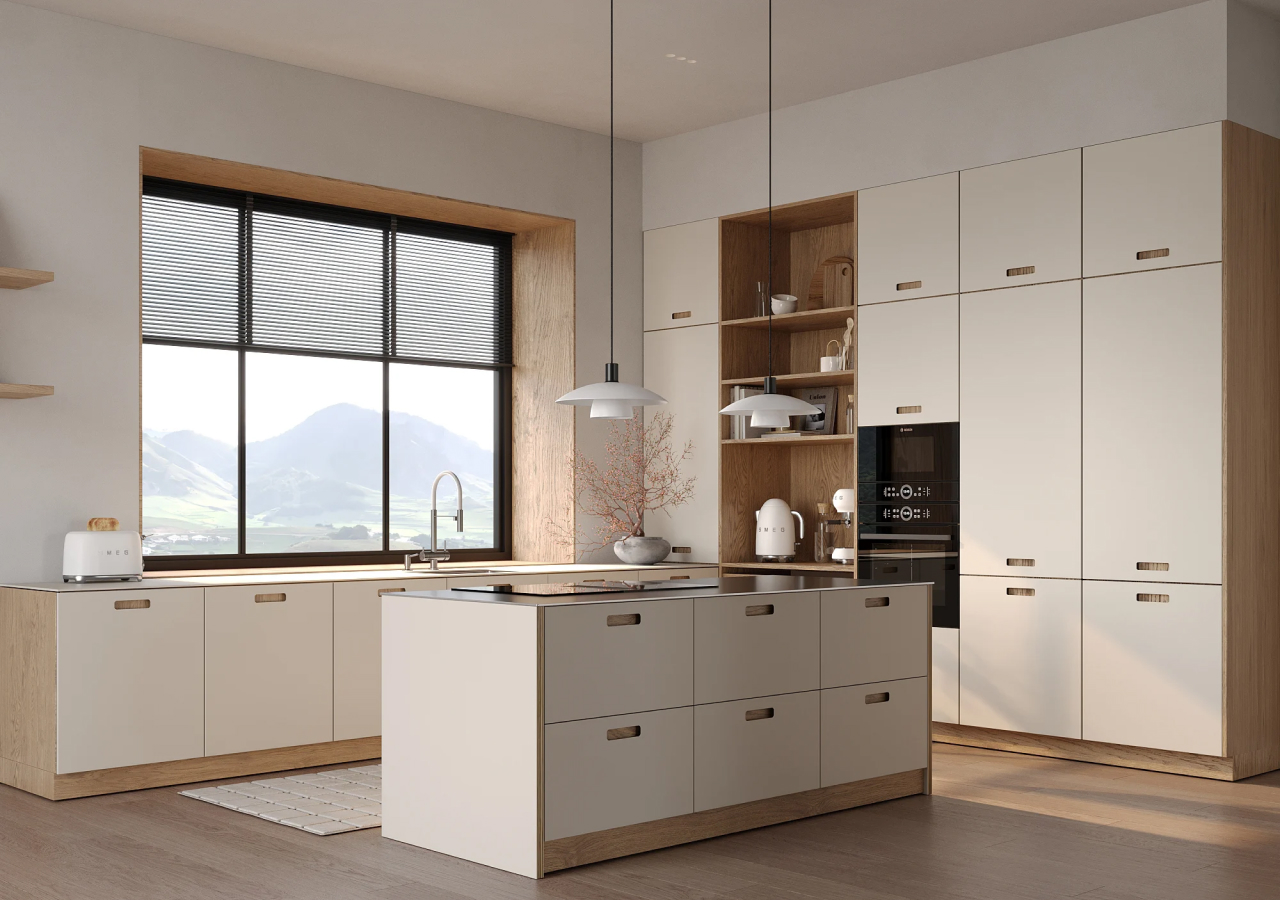
Originating from Nordic landscape and culture, Scandinavian kitchen design is all about warmth, lightness, and livability. Scandinavian kitchen designs favor open floor plans that incorporate natural light and easily connect with adjacent spaces. Referencing the philosophy of hygge, Scandinavian design is all about coziness, comfort, and aesthetic functionality.
Cabinets are plain, often matte and unhandled, in soft gray, light oak, or white finish. Wide windows, open shelving, and wood-grain textures give a light, airy sensation. Technology is admired but not hidden—appliances are within easy reach and unobtrusively placed. Ease in the daily routine is the objective, but the kitchen is provided with a cozy, lived-in appearance.
Similarities Between Japanese and Scandinavian Kitchens
Minimalist Design
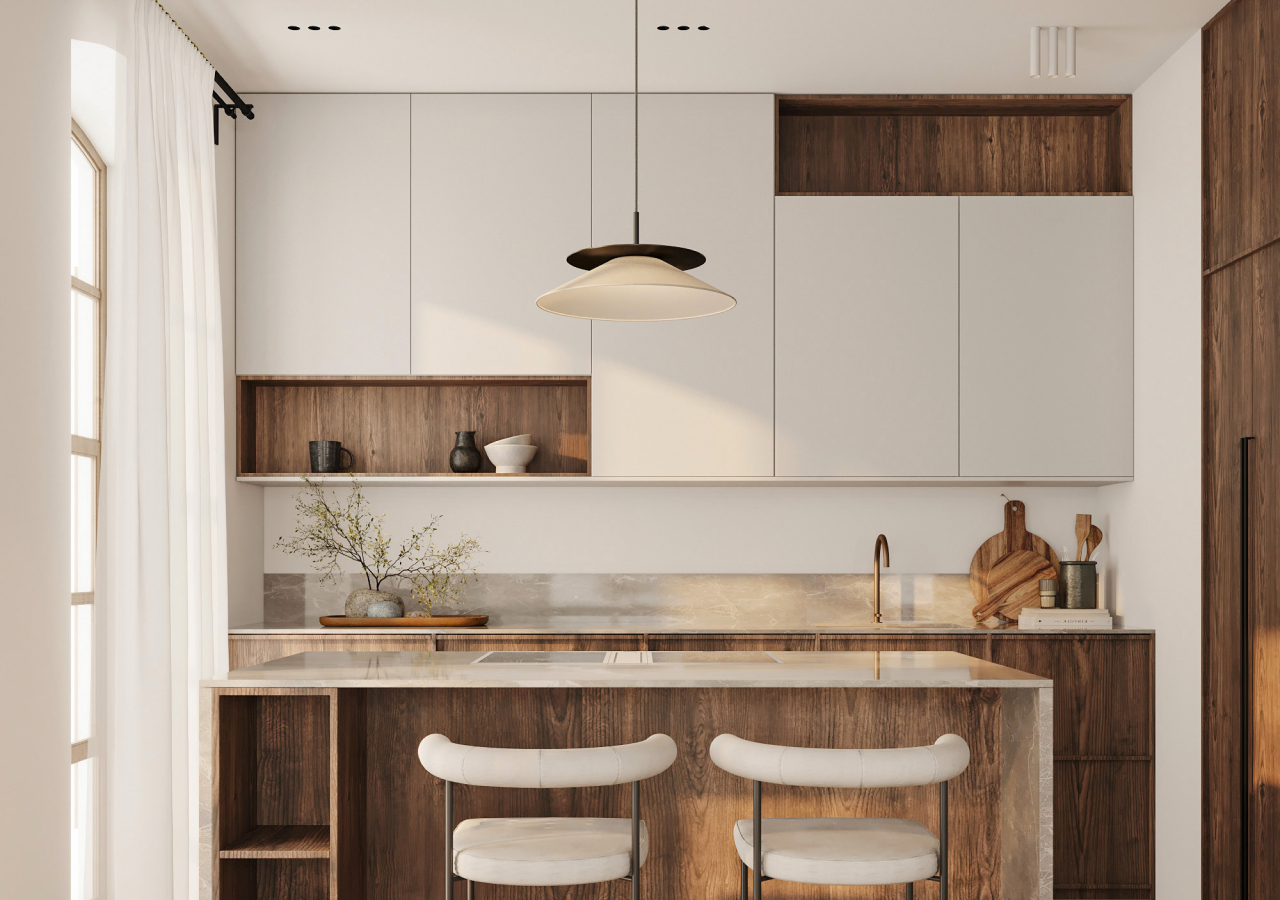
Both Scandinavian and Japanese kitchens are designed with clean lines and uncluttered spaces in mind. Their minimalist design removes visual clutter, directing attention toward quality craftsmanship, proportion, and material harmony. This restraint fosters a peaceful kitchen space that encourages mental clarity and purposeful living.
Natural Materials
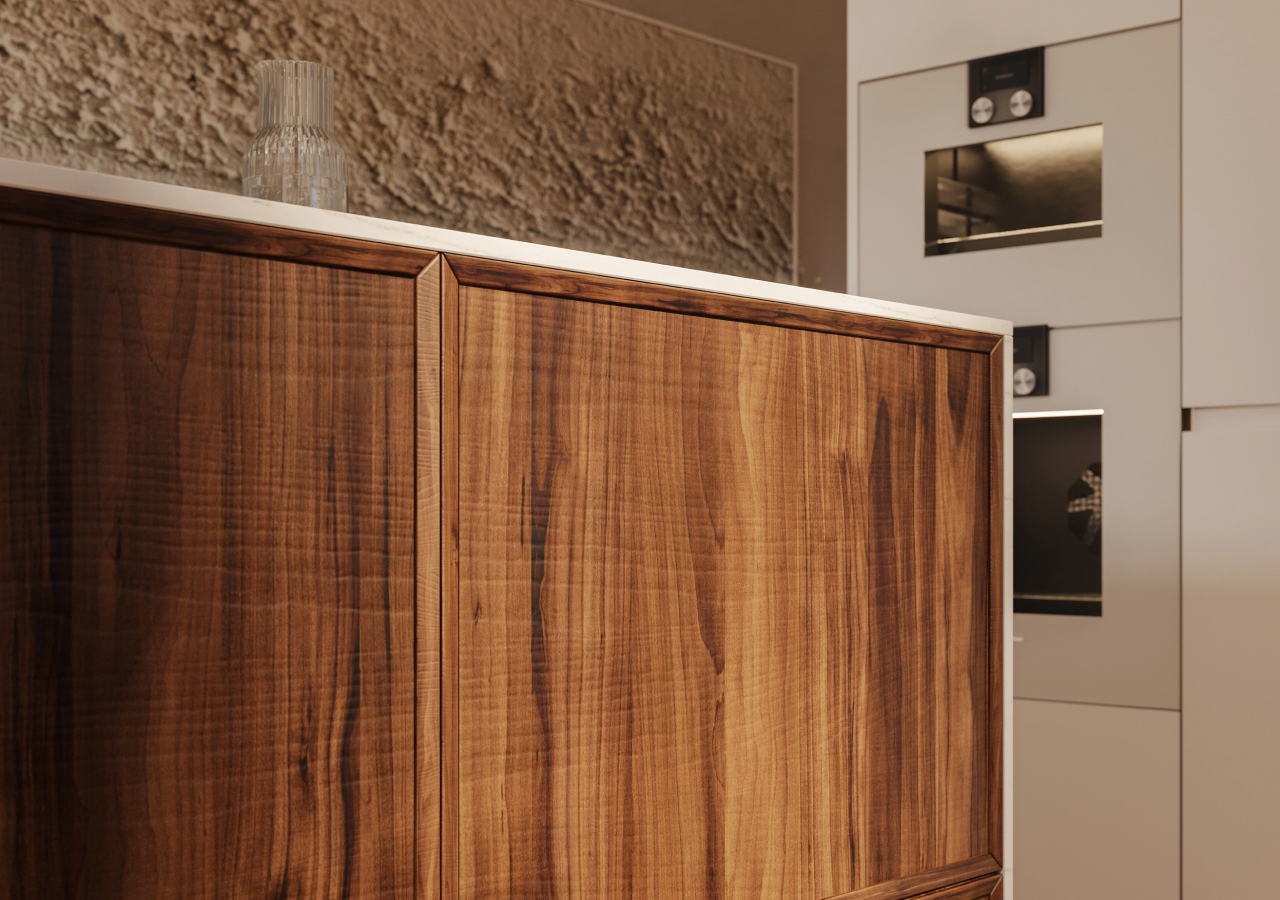
Natural materials like stone, ceramic, wood, and bamboo dominate both design approaches. These elements add organic warmth and depth as they establish a connection with the outdoors. From black walnut in a Japanese kitchen to a Scandinavian kitchen with light oak, the products add earthiness and durability where the kitchen is concerned.
Neutral Color Palettes
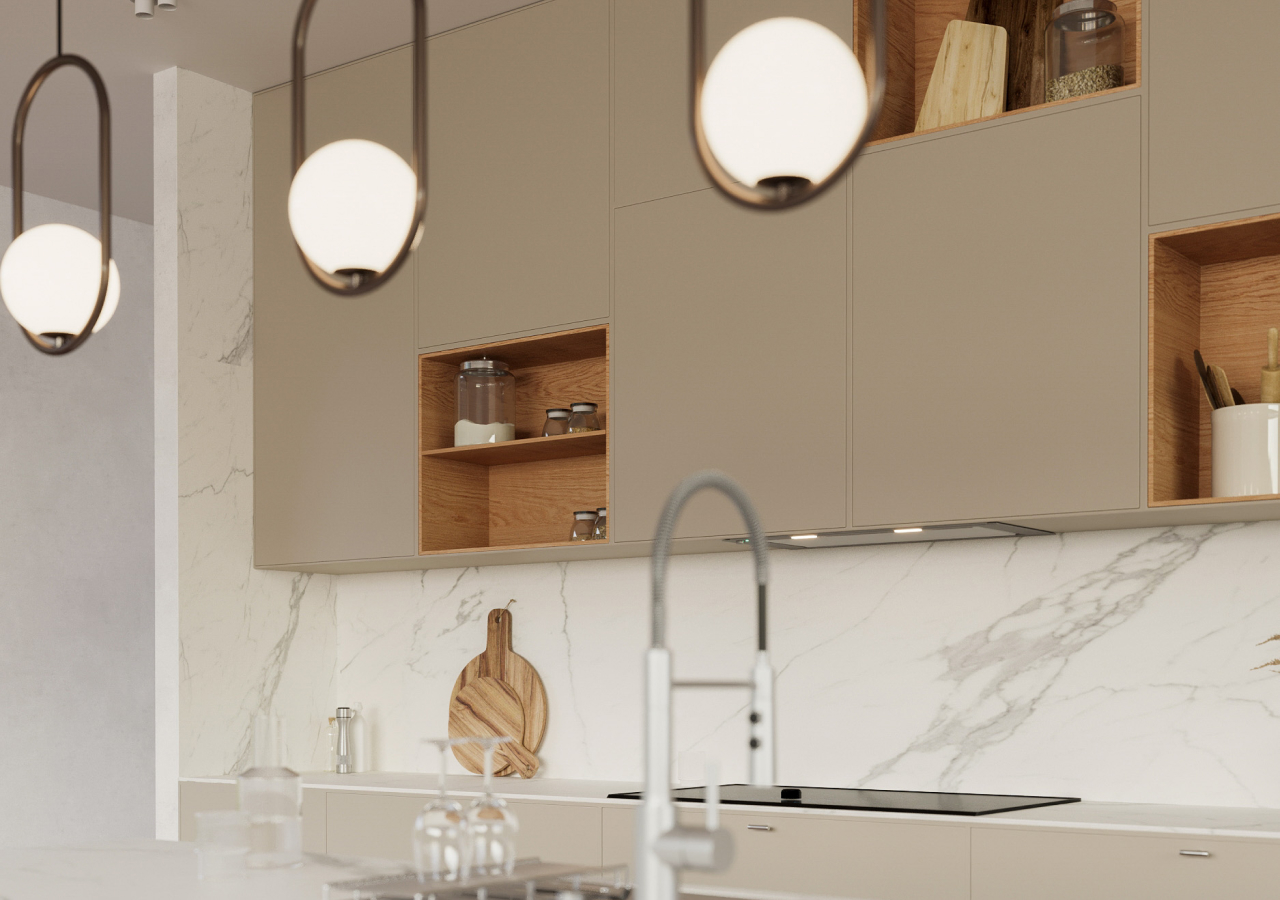
Scandinavian and Japanese kitchens require soft, neutral colors that are versatile and long-lasting. The beiges, grays, whites, and soft browns set the mood for calmness and balance. Those color combinations do more than lighten and optically expand the room; they are adaptable to changing decor and changing lifestyles.
Focus on Functionality
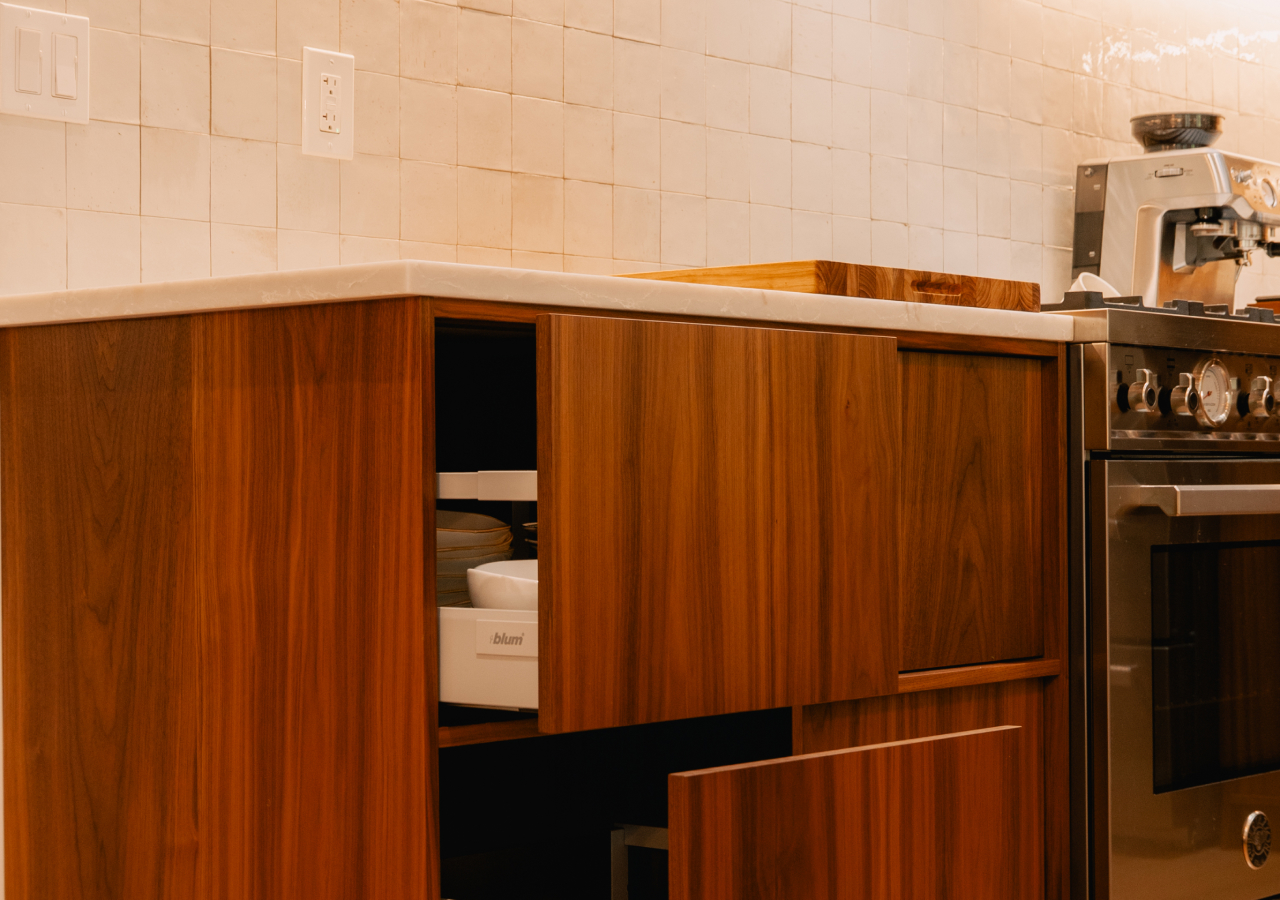
Functionality is a common concern. Both designs incorporate intelligent storage solutions, such as pull-out trash bins, under-sink pantries, and open shelving, to provide convenient access with minimal clutter. The layout of both kitchens allows for a smooth flow of activities, making daily tasks efficient and balanced.
Key Differences Between Japanese and Scandinavian Kitchens
Philosophy & Atmosphere

Japanese kitchen design draws on wabi-sabi, the aesthetic ideology of the beautiful in the simple, the imperfect, and the natural. The outcome is inward-looking kitchens that are calm and serene, spaces as much for contemplation as for cooking. Form follows function; the eye is kept uncluttered.
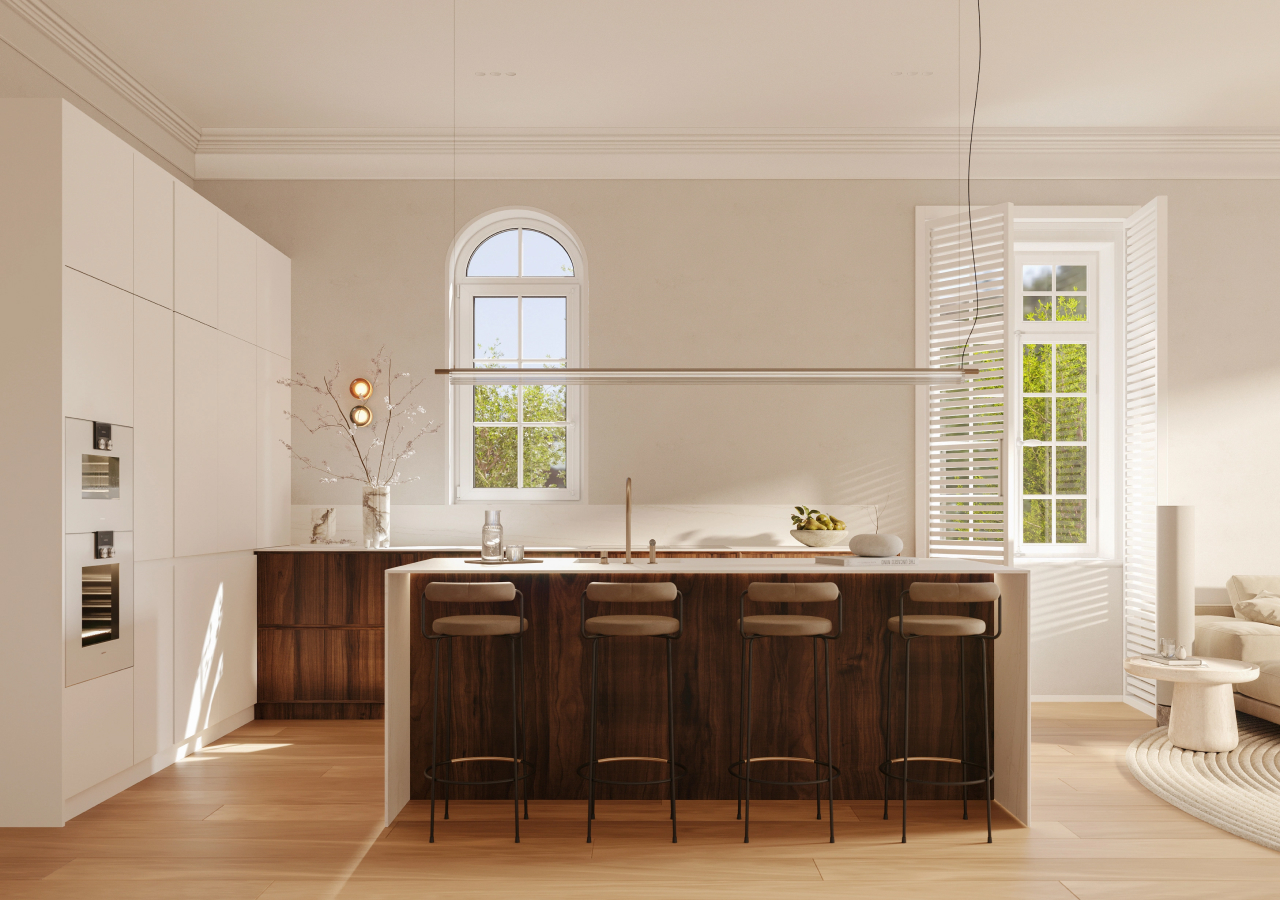
In contrast, Scandinavian kitchen design draws from the concept of hygge, which is all about coziness, comfort, and human connection. Scandinavian kitchens often feel lighthearted, warm, and social. There’s an emphasis on creating spaces that bring people together and feel emotionally nourishing.
Layout & Space Use
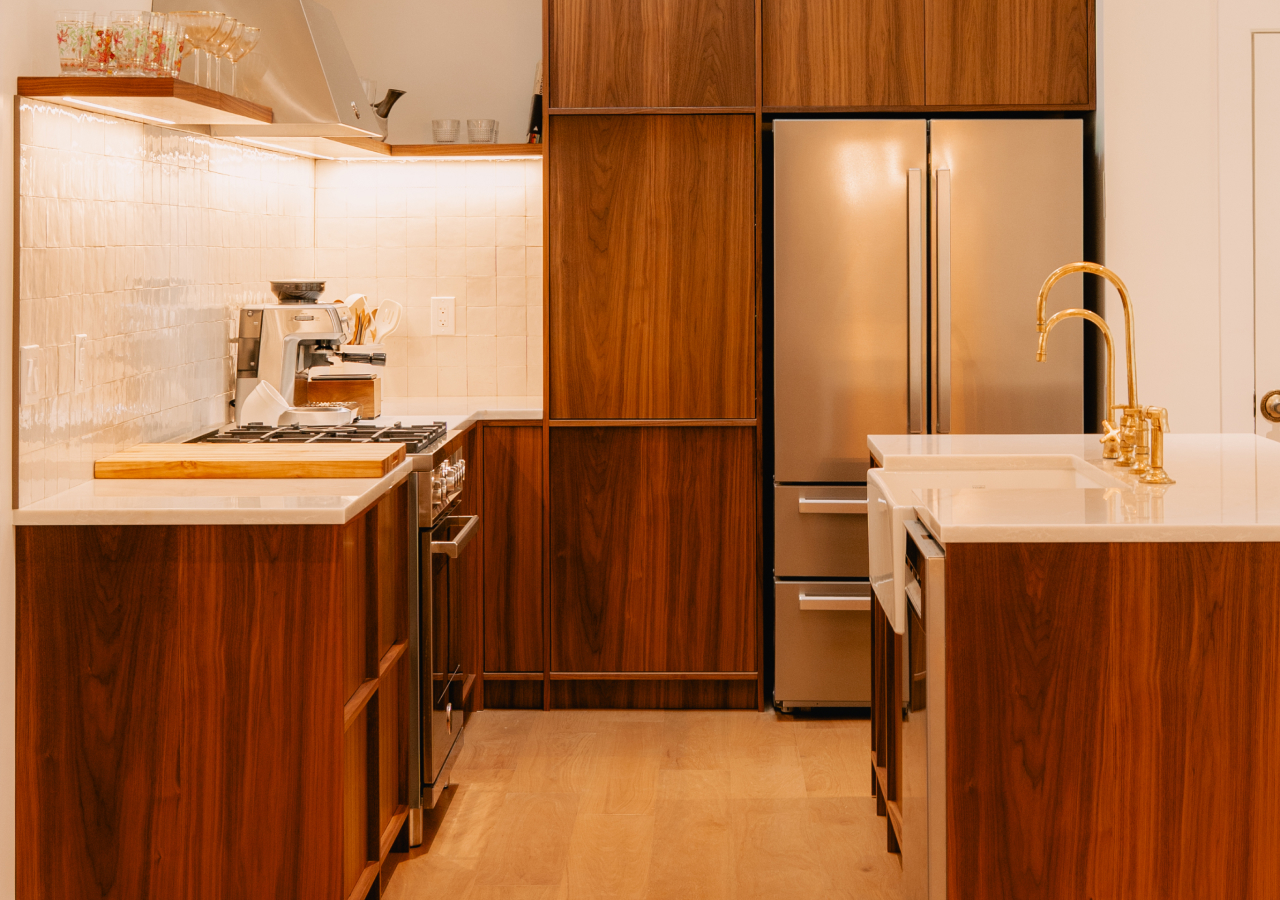
Japanese kitchen designs are typically small and extremely efficient. Many kitchen designs in Japanese culture are modular-style for smaller home spaces and emphasize efficiency above all else. Cooking, cleaning, and inventory areas are strictly defined, with even the smallest corners utilized in an effective manner.
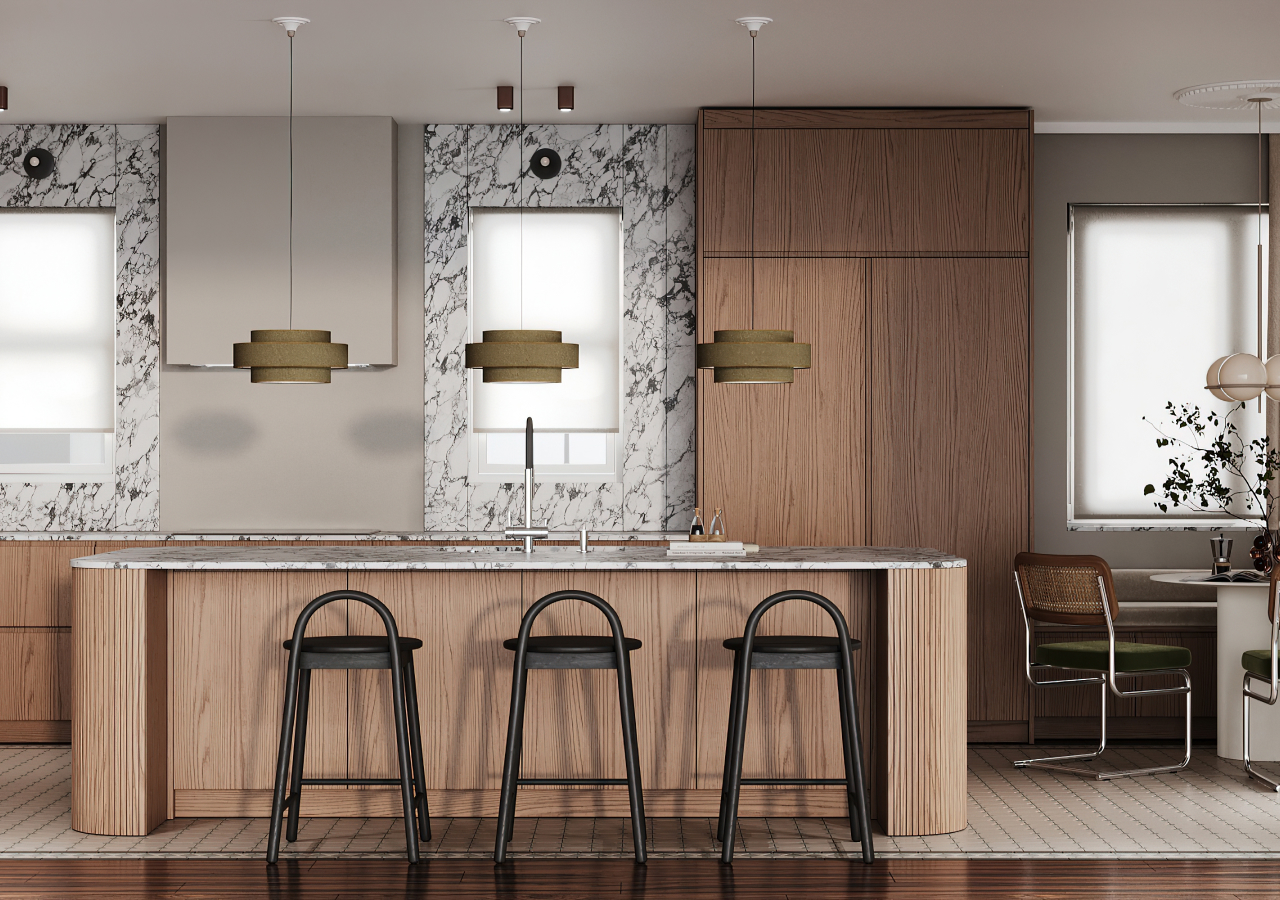
Scandinavian kitchens celebrate openness. Design elements tend to integrate cooking, dining, and relaxation areas in favor of communal living. Islands and broad countertops provide social gathering spaces, and the design favors free movement through the area.
Color & Material Palette

The color scheme in Japanese kitchens is earthy and monochromatic. Think walnut richness, matte black finish, dark stone, and grays. These darker tones provide a level of intimacy and equilibrium and underpin the wabi-sabi aesthetic. Materials are raw and natural or treated lightly in order to reveal the true texture.

Scandinavian kitchens prefer a light aesthetic. Light woods, white walls, and pastel shades predominate, creating bright spaces that seem expansive and fresh. Surfaces tend to be smooth and matte, and grain on the wood is emphasized in order to give a tactile aspect.
Decor & Technology
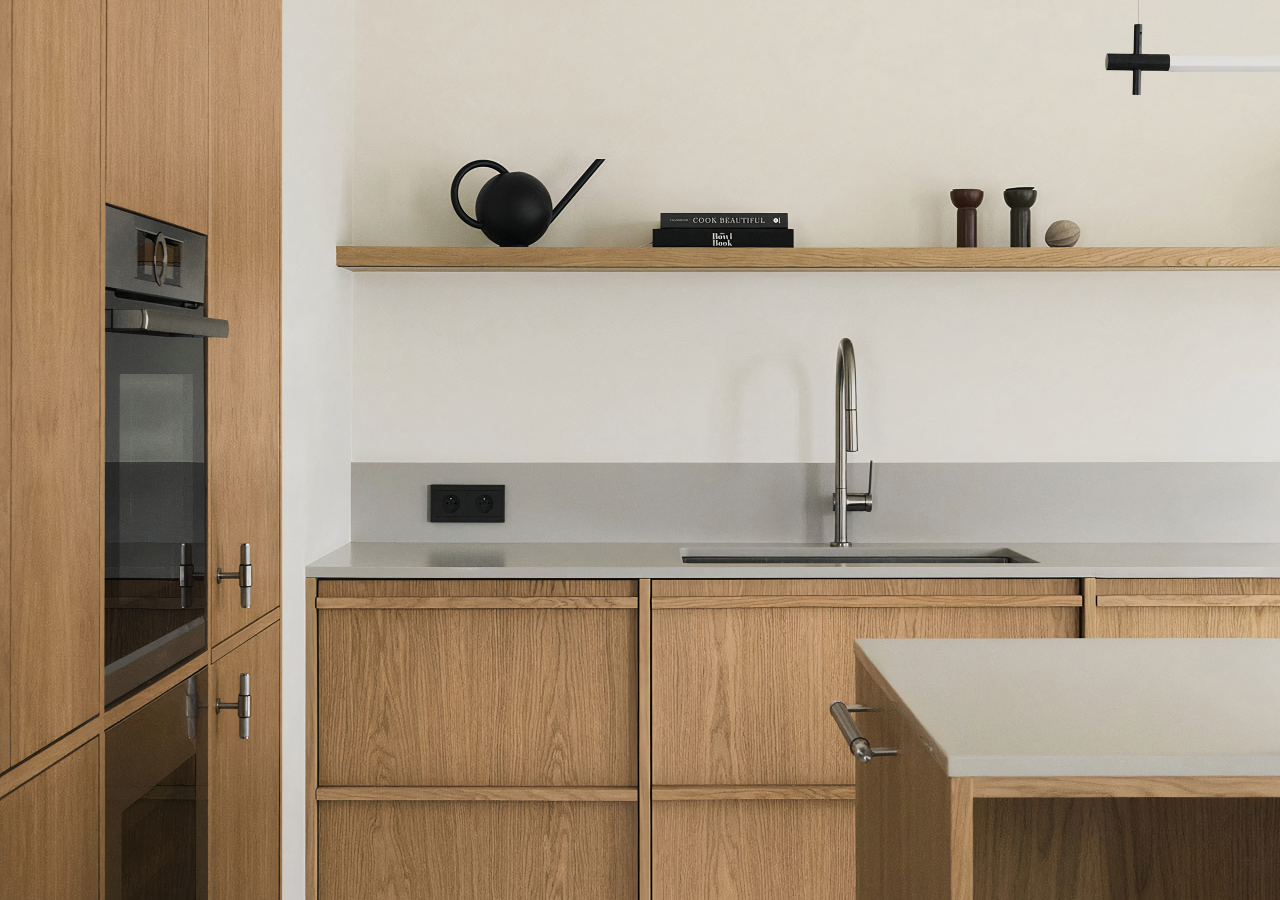
Japanese kitchens are unadorned in terms of decoration. You may spot one stunningly crafted ceramic object or a splash of greenery, but the room itself is kept visually simple. Appliances are frequently installed in a hidden manner or are built-in, and technology is unobtrusively incorporated in order to prevent the aesthetic balance from being broken.
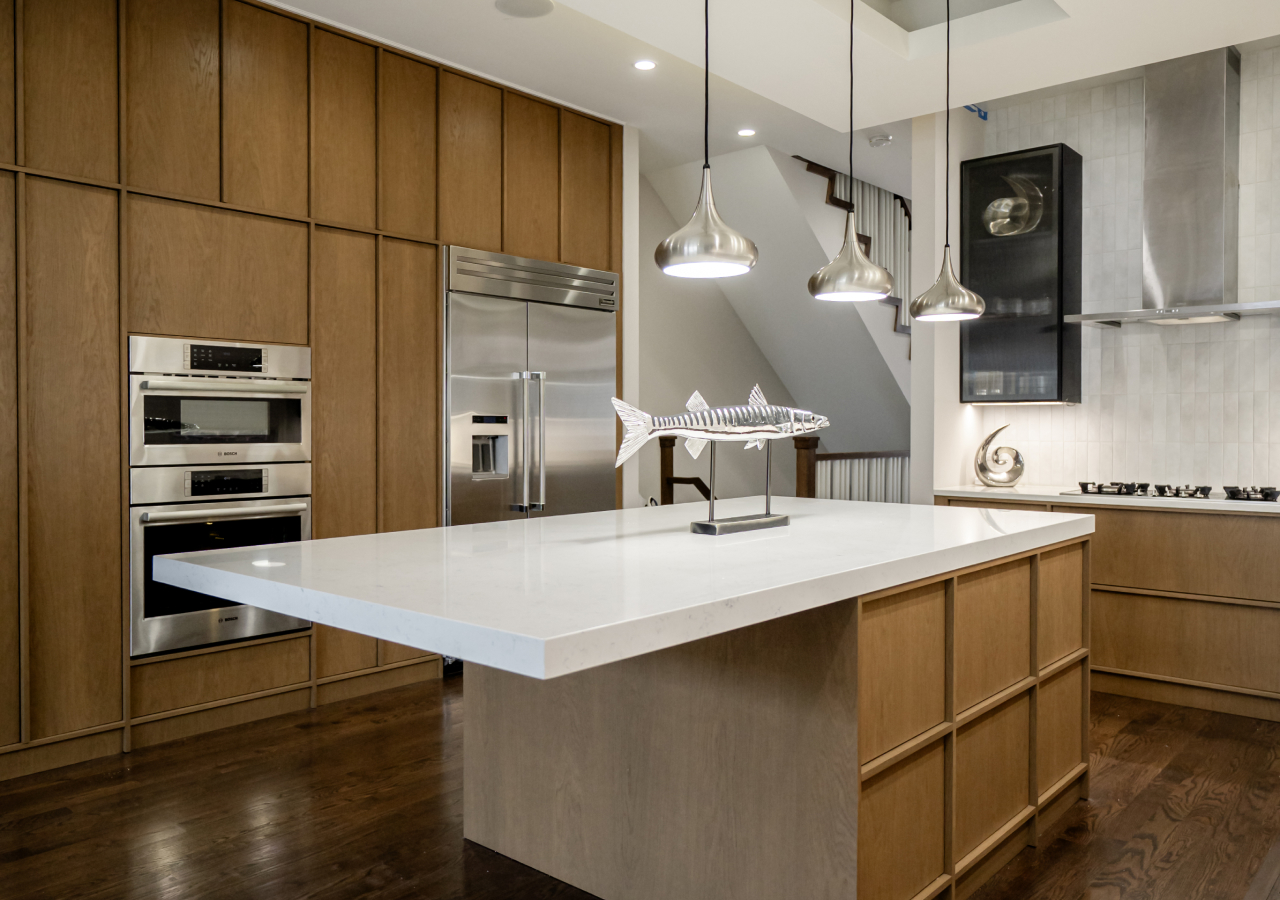
By comparison, Scandinavian kitchens are more expressive. Decor elements such as woven mats, picture frames, and stoneware pottery bring warmth and personality to the space. Appliances are open and user-friendly. Rather than hiding technology, Scandinavian design embraces it as part of modern life.
Japanese Kitchen vs Scandinavian Kitchen: Which Style to Choose?
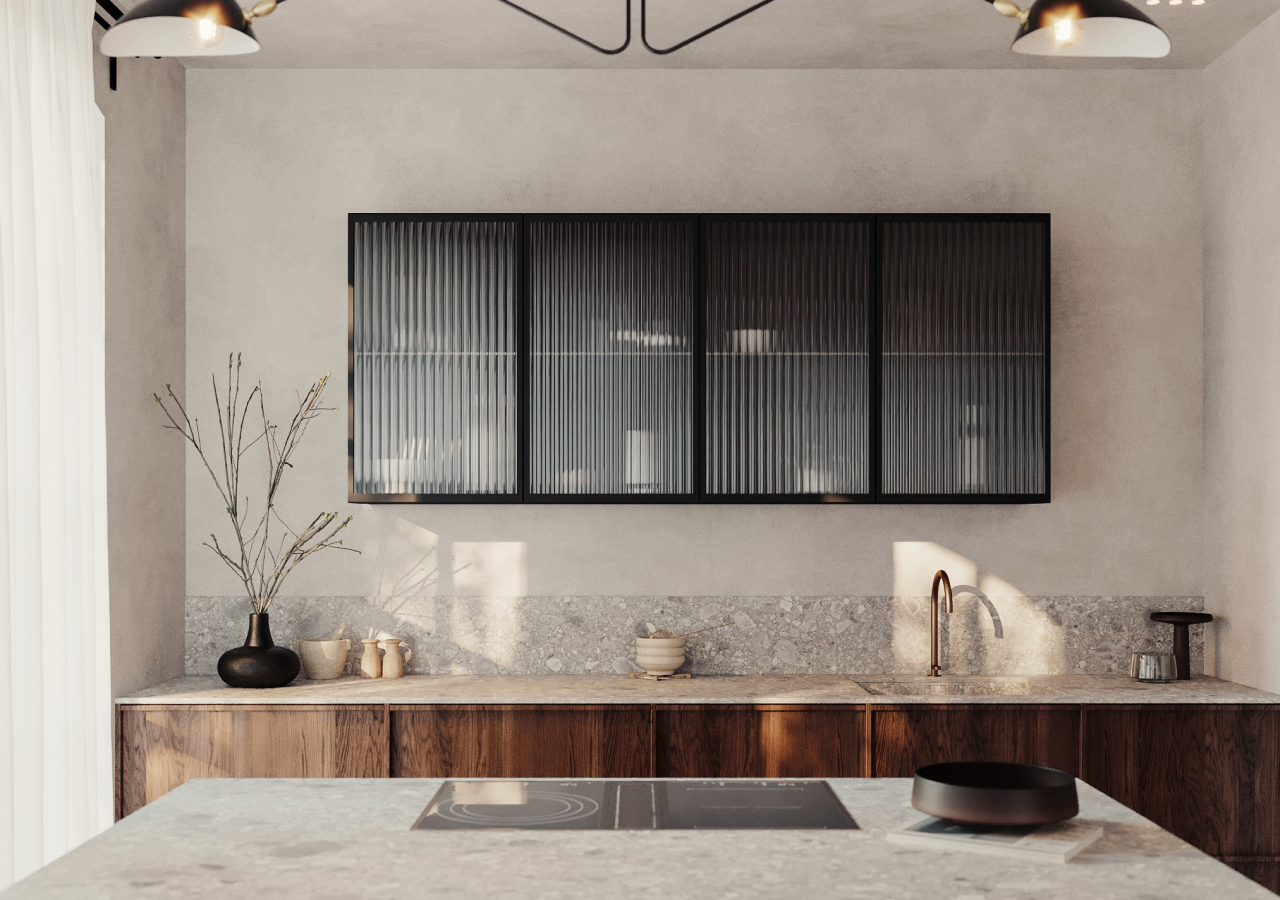
Choosing between these two styles depends on how you live and how you want your kitchen to feel. If you crave calm, order, and a sense of quiet sophistication, a Japanese kitchen may be ideal. Its clean lines, hidden tech, and organic materials promote focus and simplicity. If your kitchen is the heart of your home—where cooking blends with conversation—the Scandinavian approach may be a better fit. Its open layout, warm textures, and functional storage promote connection and ease.
Of course, you won’t necessarily have to pick one over the other. Japandi kitchens take the best of both: the simple serenity from Japanese design and the cozy lightness from Scandinavian style. Whichever route you go, deliberate design will forever provide a superior kitchen.
Conclusion
Japanese and Scandinavian kitchens offer more than superficial beauty. They evoke intelligent living through thought-driven design, calm through minimalism, and joy through details. Depending on whether someone is drawn to the former aesthetic or a fusion between both aesthetics, the key consideration is design with intention.
If you’re ready to take the next step toward creating a kitchen that aligns with your lifestyle, start by exploring your materials, layout, and design philosophy. Thoughtful choices today can result in a kitchen that feels just right for years to come.
Need help bringing your vision to life? Browse Corner Renovation’s kitchen collections and discover a style that speaks to you.
FAQ
What is a Scandinavian kitchen style?
A Scandinavian kitchen style emphasizes simplicity, functionality, and light. It features open-plan layouts, light wood finishes, minimal decor, and user-friendly appliances, all designed to promote a cozy, efficient environment.
What interior design style is similar to Scandinavian?
Japandi, minimalism, and modern Nordic styles share similarities with Scandinavian design. These aesthetics all value clean lines, natural materials, and clutter-free spaces.
Is Scandinavian style timeless?
Scandinavian style is known for its timelessness due to its neutral color palettes, honest materials, and emphasis on comfort and practicality.
What is a Japanese kitchen style?
A Japanese kitchen style is grounded in wabi-sabi and emphasizes natural materials, compact layouts, minimal decor, and built-in, concealed appliances to promote harmony and efficiency.
What is the difference between the Japanese and Scandinavian style?
Japanese style focuses on tranquility and simplicity through darker tones, compact spaces, and subtle elegance, while Scandinavian style emphasizes light, comfort, and openness with bright palettes and social layouts.
What is Japanese interior design called?
Japanese interior design is often referred to as “wabi-sabi” or “Zen style,” both reflecting a philosophy of simplicity, impermanence, and understated beauty.
What is the name of Japanese Scandinavian design?
The fusion of Japanese and Scandinavian styles is known as “Japandi.” It blends Japanese minimalism and natural elegance with Scandinavian warmth and functionality.
Is Japandi still trendy?
Japandi remains a popular and enduring trend, especially among modern homeowners who seek a balance of serenity, utility, and aesthetic harmony.

